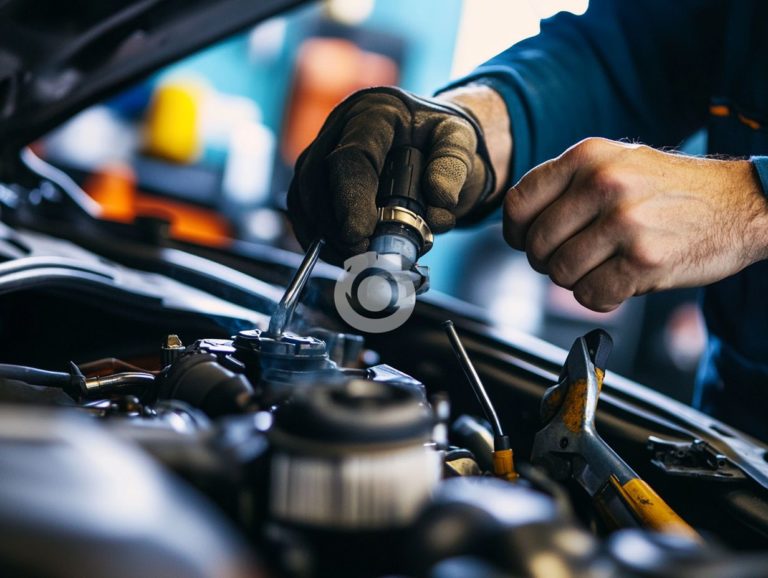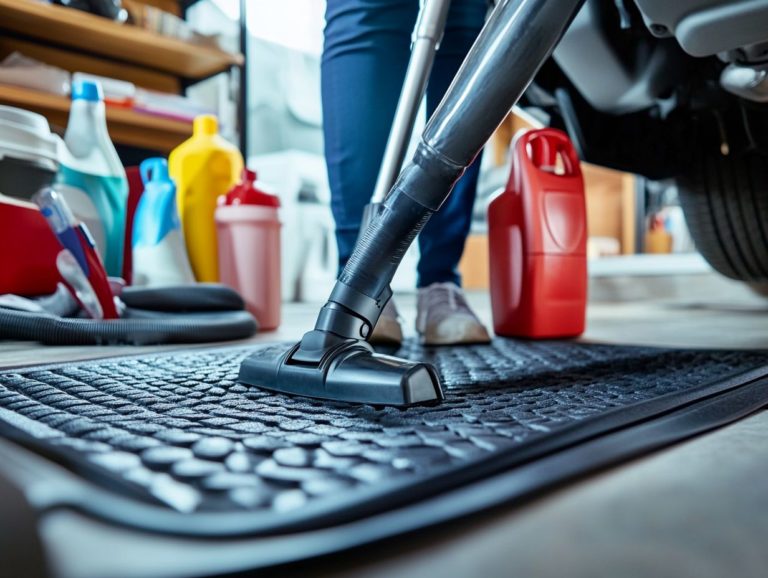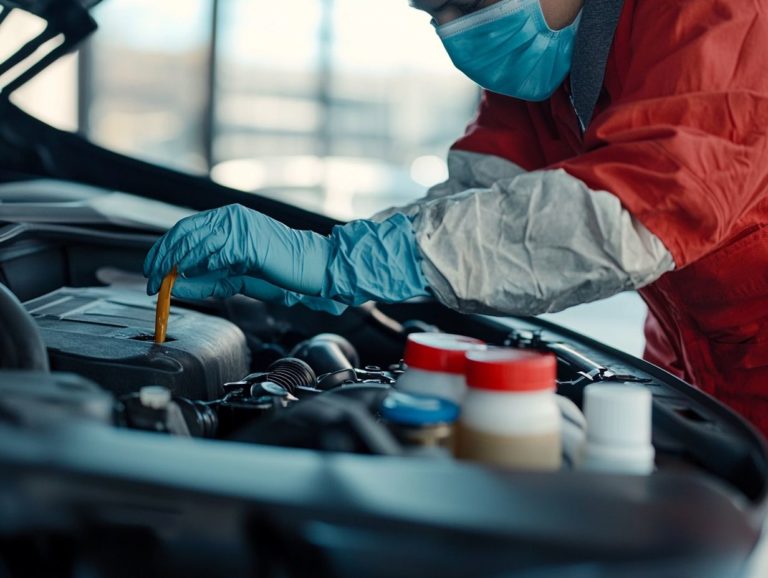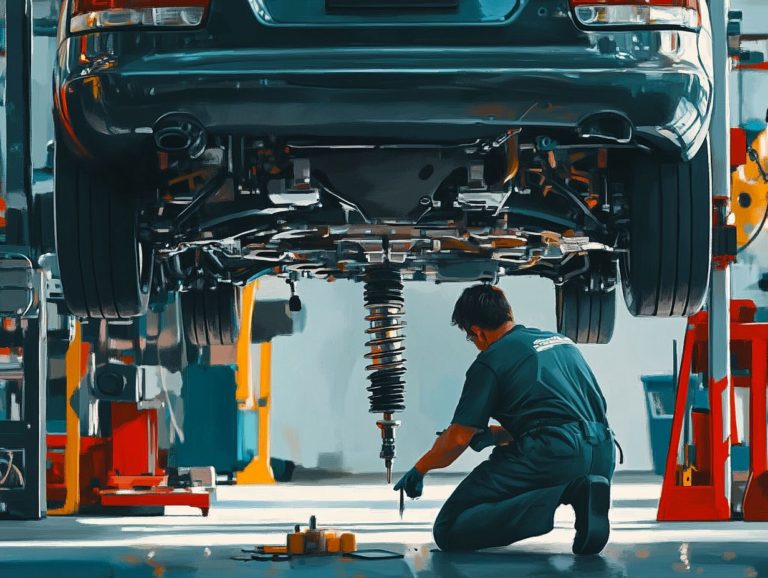Best Practices for Car Maintenance in Winter
As the chilly months draw near, it s crucial for you to ensure your car is prepared for winter to safeguard your safety and vehicle performance.
This guide offers a thorough winterizing checklist to help you get your vehicle ready for icy roads. You ll discover practical winter driving tips that encourage safe practices and essential maintenance tasks to keep your car in peak condition.
Smart strategies for storing your car during the colder months are included. Embrace these insights to stay ahead of winter challenges and maintain your vehicle’s reliability throughout the season!
Contents
- Key Takeaways:
- Preparing Your Car for Winter
- Winter Driving Tips
- Winter Car Maintenance
- Dealing with Winter Car Troubles
- Storing Your Car During Winter
- Frequently Asked Questions
- What are the best practices for car maintenance in winter?
- Why is checking tire pressure important for winter car maintenance?
- What should I do to prepare my car’s battery for winter?
- Is it necessary to use winter windshield wiper fluid?
- What can I do to prevent my car’s doors from freezing shut?
- Should I get a winter tune-up for my car?
Key Takeaways:
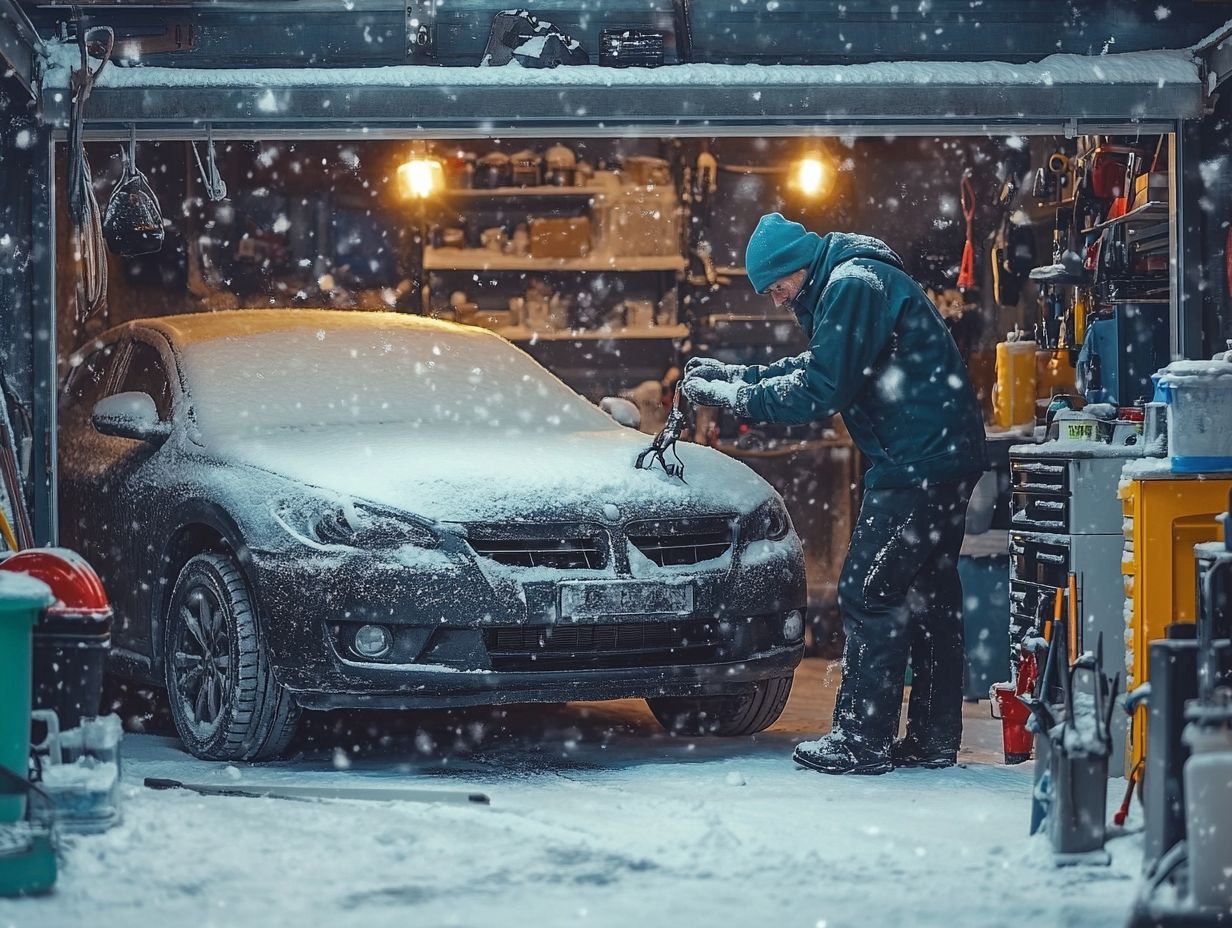
- Keep your car prepared for winter by following a winterizing checklist, which includes checking the battery, tires, and fluids.
- Practice safe driving habits during winter, such as driving slowly, leaving extra space between cars, and avoiding sudden braking or acceleration.
- Maintain your car during the winter by regularly checking and replacing essential components and following a recommended maintenance schedule.
Preparing Your Car for Winter
Preparing your car for winter is crucial, particularly in places like Colorado, where the cold can seriously affect your vehicle’s performance and safety.
A comprehensive winter maintenance routine should include a detailed assessment and servicing of essential components such as the battery, tires, and engine fluids following best practices for new car maintenance.
By taking this proactive approach, you enhance your vehicle’s reliability in frigid temperatures. This preparation also helps prevent unexpected issues on the road.
Don t wait! Prepare your vehicle now for a safer winter drive. A well-prepared vehicle with an emergency kit and safety gear can make all the difference in unforeseen situations.
Winterizing Checklist
A comprehensive winterizing checklist is essential for preparing your vehicle to tackle the challenges of cold weather and winter driving conditions.
This checklist acts as a crucial tool for protecting yourself against unexpected breakdowns and enhancing road safety during those harsh winter months.
Key components include:
- Adjusting tire pressure, which can drop significantly in cold weather and affect your vehicle’s traction and handling.
- Testing the battery’s strength (a check to see if the battery can start your engine in cold weather) to minimize the risk of being stranded.
- Replenishing wiper fluid to ensure clear visibility, preventing ice from obstructing your windshield.
- Checking engine fluids, such as antifreeze and oil, to ensure optimal performance and avoid potential damage.
- Evaluating the need for snow tires to provide necessary grip on icy roads.
Together, these measures contribute to a more secure winter driving experience, allowing you to navigate the season with confidence.
Winter Driving Tips
Navigating winter conditions requires you to adopt a particular set of driving tips to ensure not only your safety but also that of others on the road.
This becomes especially crucial when visibility plummets due to snow and ice.
Safe Driving Practices
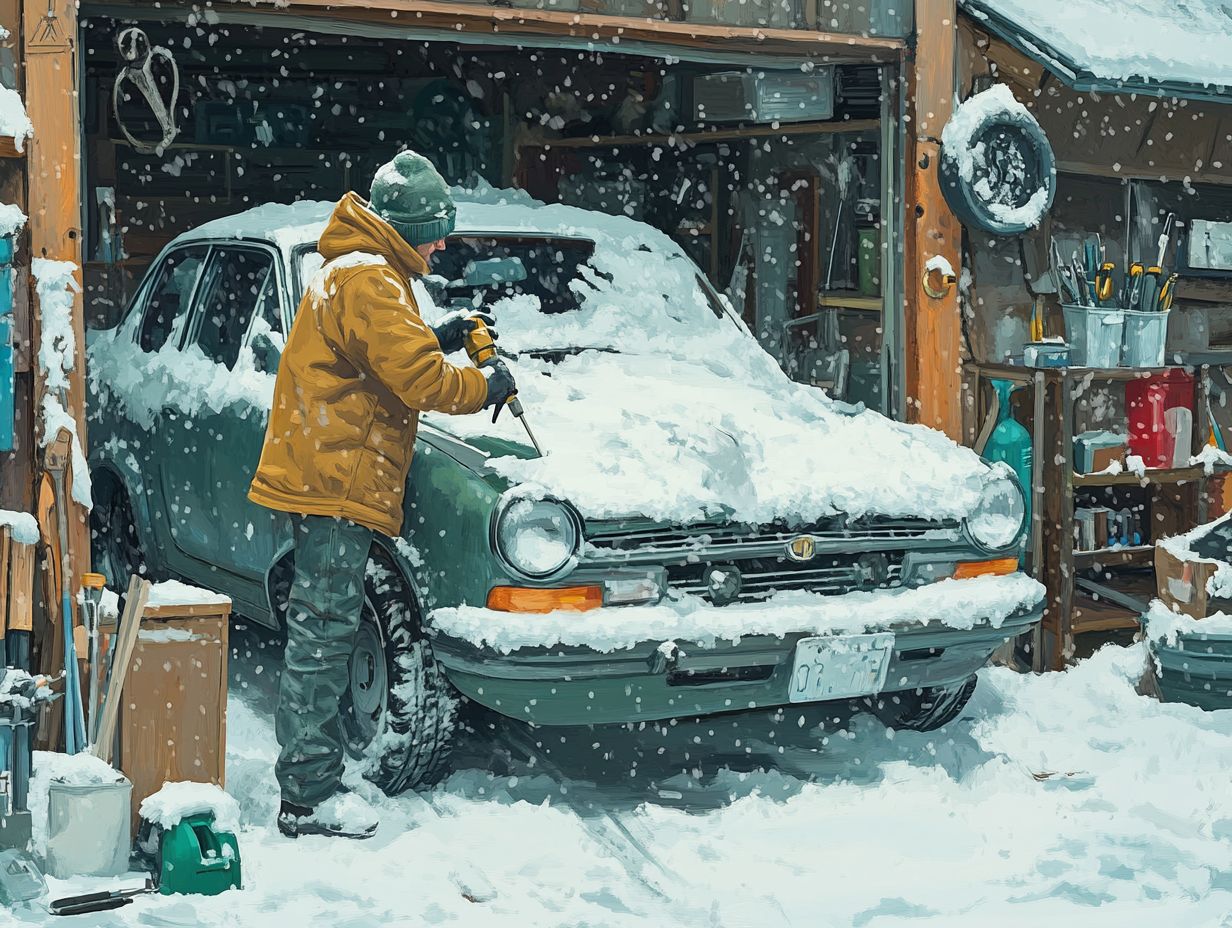
Implementing safe driving practices during winter conditions is essential for avoiding accidents and ensuring a smooth journey, especially when faced with challenges like reduced traction and visibility issues.
You must remain particularly vigilant when driving in snowy or icy conditions, as maintaining a safe distance between vehicles is crucial for those longer stopping times.
It s vital to reduce your speed not just for your own safety, but for the safety of everyone around you, since slippery roads can turn sudden maneuvers into unpredictable events.
Understanding how your vehicle behaves on different road surfaces plays a significant role in enhancing your awareness and control. Employing techniques such as gradual steering and smooth braking can further improve your stability and minimize the risk of skidding, ensuring that you and everyone else arrive at your destinations safely.
Winter Car Maintenance
Winter car maintenance is essential to ensure your vehicle functions well during the cold months, especially in regions like Colorado, where freezing temperatures can affect engine performance and safety. For detailed advice, check out this guide on how to keep your car in top condition year-round.
Taking proactive measures now will enhance your driving experience and protect your investment in the long run.
Essential Maintenance Tasks
Winter car upkeep is vital. Ensure antifreeze, oil, battery, wiper fluid, and brakes are ready for the cold by knowing how to handle common winter car repairs.
As winter approaches, check your antifreeze to prevent engine freeze-ups. Schedule oil changes to keep your engine running smoothly.
Conduct battery load tests to ensure your power source is reliable and avoid the frustration of a dead battery on frosty mornings. Check your wiper fluid levels for clear visibility; this is crucial for safe driving during snowstorms.
Lastly, inspect your brakes to ensure they can handle slippery roads and keep you safe on your journeys.
Recommended Maintenance Schedule
Establishing a maintenance schedule for winter car care can greatly enhance your vehicle’s reliability and performance in harsh weather, as outlined in our guide on how to maintain your car during winter.
By ensuring timely oil changes, checking fluids, and inspecting belts and hoses, you can reduce the risk of breakdowns as temperatures drop and road conditions worsen.
As the seasons shift, adjust your maintenance schedule. Prepare your vehicle for cold weather by checking tire pressure and making sure your wiper blades are in peak condition. For a comprehensive approach, refer to the ultimate checklist for seasonal car maintenance.
Staying proactive and following a maintenance timetable saves both time and money, ensuring your vehicle operates efficiently during winter. For more information on keeping your car in top shape, check out best practices for car maintenance.
Dealing with Winter Car Troubles
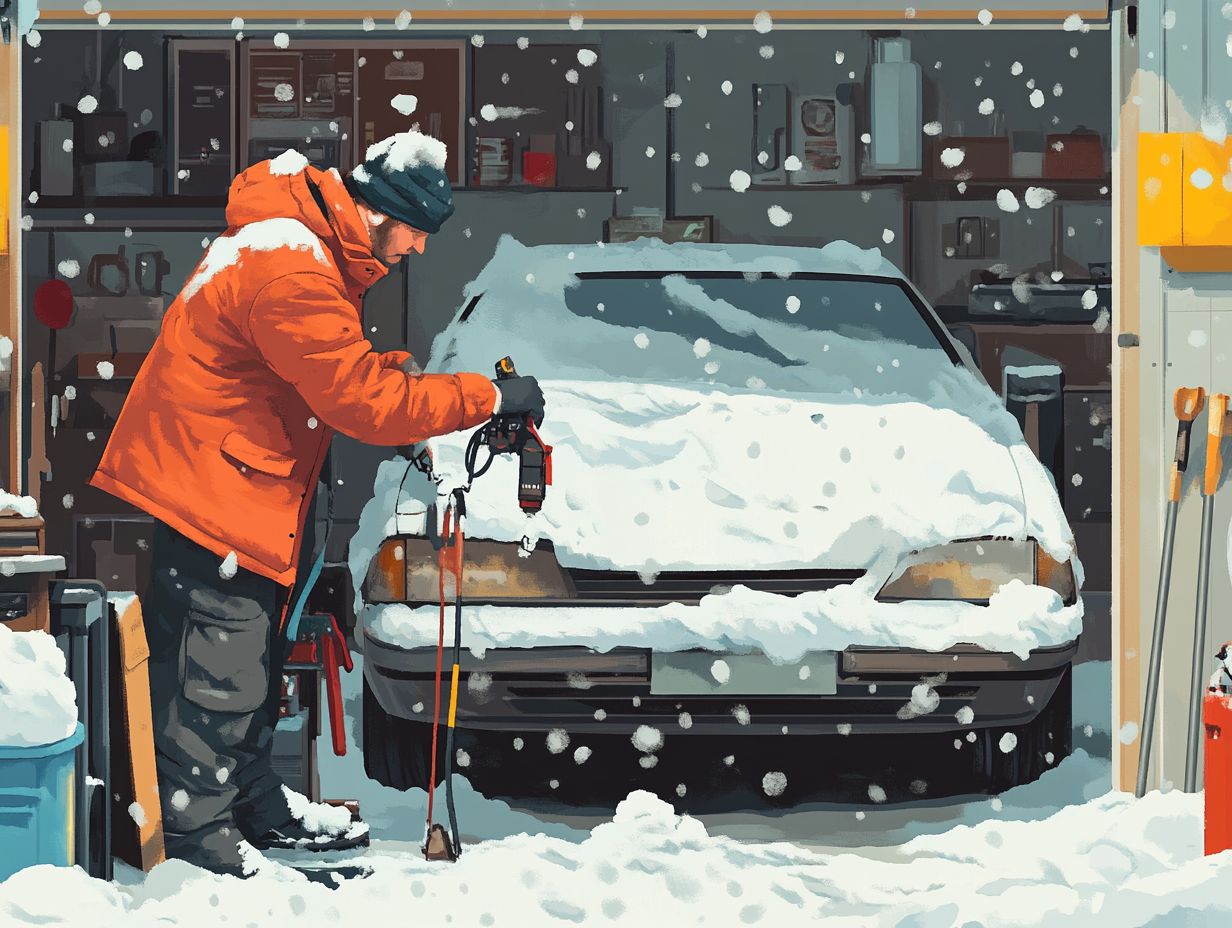
Navigating winter car troubles requires awareness of common issues that may arise in cold weather. Be on the lookout for your battery’s performance it s key to a smooth winter drive!
Common Issues and How to Handle Them
Common winter driving issues often include tire problems, battery failures, and engine malfunctions. Troubleshooting these problems is essential for your safety on the road.
Check your tire pressure and tread depth regularly to prevent dangerous slips on icy roads. Additionally, following the best maintenance practices for SUVs can help ensure your vehicle remains in top condition. Keep an eye on your battery; cold temperatures can reduce its effectiveness.
Look for signs of wear like corrosion or bulging, and make routine testing part of your winter prep. For engine troubles, stay alert to unusual sounds or warning lights to catch issues early.
Storing Your Car During Winter
Storing your car during winter is a crucial consideration. If you live in areas with severe weather conditions, proper storage can impact your vehicle s longevity and performance.
Taking the time to protect your investment ensures your car remains in optimal shape, ready to hit the roads when the seasons change.
Tips for Long-Term Storage
When considering long-term storage for your vehicle during winter, effective servicing is essential. Be sure to prepare your car for winter by giving it a thorough wash and checking the antifreeze levels.
Proper winterization protects your vehicle’s exterior and internal components. This prevents freezing and engine damage when temperatures drop.
Don’t forget about your battery. A dead battery can lead to frustrating surprises, so keep it charged and clean.
Cleaning all surfaces helps prevent dirt and moisture buildup, which can cause rust. These simple preventative measures can significantly enhance your vehicle’s longevity during winter.
Frequently Asked Questions
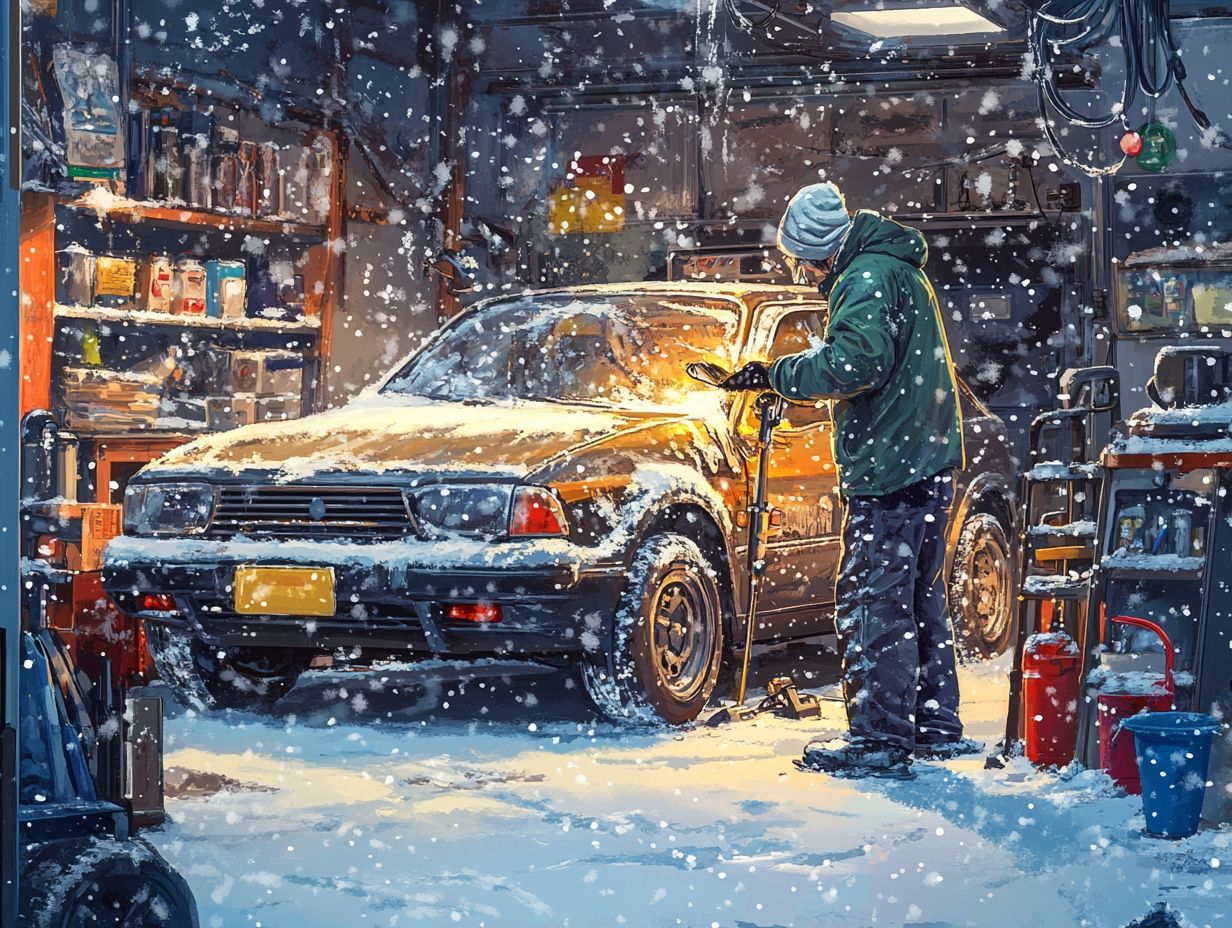
What are the best practices for car maintenance in winter?
Check your tire pressure, ensure your battery is charged, and use winter windshield wiper fluid.
Why is checking tire pressure important for winter car maintenance?
In cold temperatures, tire air contracts, lowering pressure. This affects traction and handling, so check it regularly.
What should I do to prepare my car’s battery for winter?
A fully charged battery is crucial for starting your car in cold weather. Clean corrosion off terminals and check the water level.
Is it necessary to use winter windshield wiper fluid?
Yes, it’s specially formulated to prevent freezing. Regular fluid can freeze and damage wiper blades.
What can I do to prevent my car’s doors from freezing shut?
Apply silicone spray to the rubber seals around doors. Use a de-icing solution if they do freeze.
Should I get a winter tune-up for my car?
Yes, it’s wise to get a winter tune-up. This includes checking fluids and inspecting heating and cooling systems.
Start preparing your vehicle for winter now to ensure a smooth and safe driving experience!

